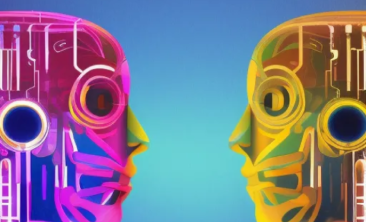
What’s All the Fuss With ChatGPT?
What’s All the Fuss With ChatGPT? https://www.visualstorytell.com/wp-content/uploads/2023/01/ChatGPT-thumb.png 366 222 Shlomi Ron Shlomi Ron https://secure.gravatar.com/avatar/995c0cf093380b90c7704fda398c9addf4e5c605afbc92af5c3f01f67d65aa41?s=96&d=mm&r=g- Shlomi Ron
- no comments
No doubt, OpenAI’s ChatGPT AI tool is a watershed moment that is bound to impact many sectors, including marketing and the way we tell stories.
You may wonder, what’s all the fuss with ChatGPT?
I don’t know what it was, the pandemic? A normal evolution? Or the combination of both.
However, in the past two years we have experienced a tremendous tech innovation that is likely to disrupt many sectors, and particularly our focus – visual storytelling.
Catching Waves
Since I follow trends that could affect how marketers can tell richer stories that create stronger emotional connections – I’m always on the lookout for next gen storytelling techniques and tools.
Like a surfer catching waves at their peaks, I also like to share my observations as the trend is breaking out and getting the most attention.
These publishing dates represent trends’ actual spikes:
April 2021: What’s All The Fuss With NFTs?
June 2021: How to create your first NFT?
December 2021: What’s All The Fuss With The Metaverse?
September 2022: What is AI Generated Image?
December 2022: The ChatGPT Craze I briefly touched on it in my bi-weekly news commentary and, if you recall, even tested it in the story: How to Tell Your Story At Holiday Gatherings.
So I figured it’s time to do a proper story about ChatGPT and its implications for your brand and visual storytelling strategy.
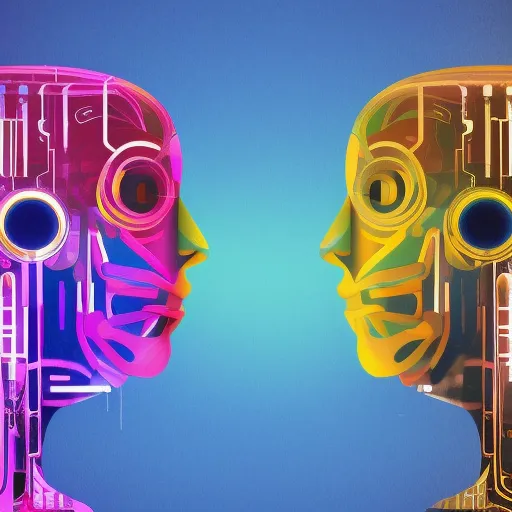
“Why don’t you have your bot talk to my bot and we’ll go from there?” (created with Stable Diffusion)
First Off! Chat What!?
ChatGPT stands for “Generative Pre-Trained Transformer.” ChatGPT is a natural language processing chatbot that was released by OpenAI on November 30th, 2022. In five days more than a million people signed up to test it.
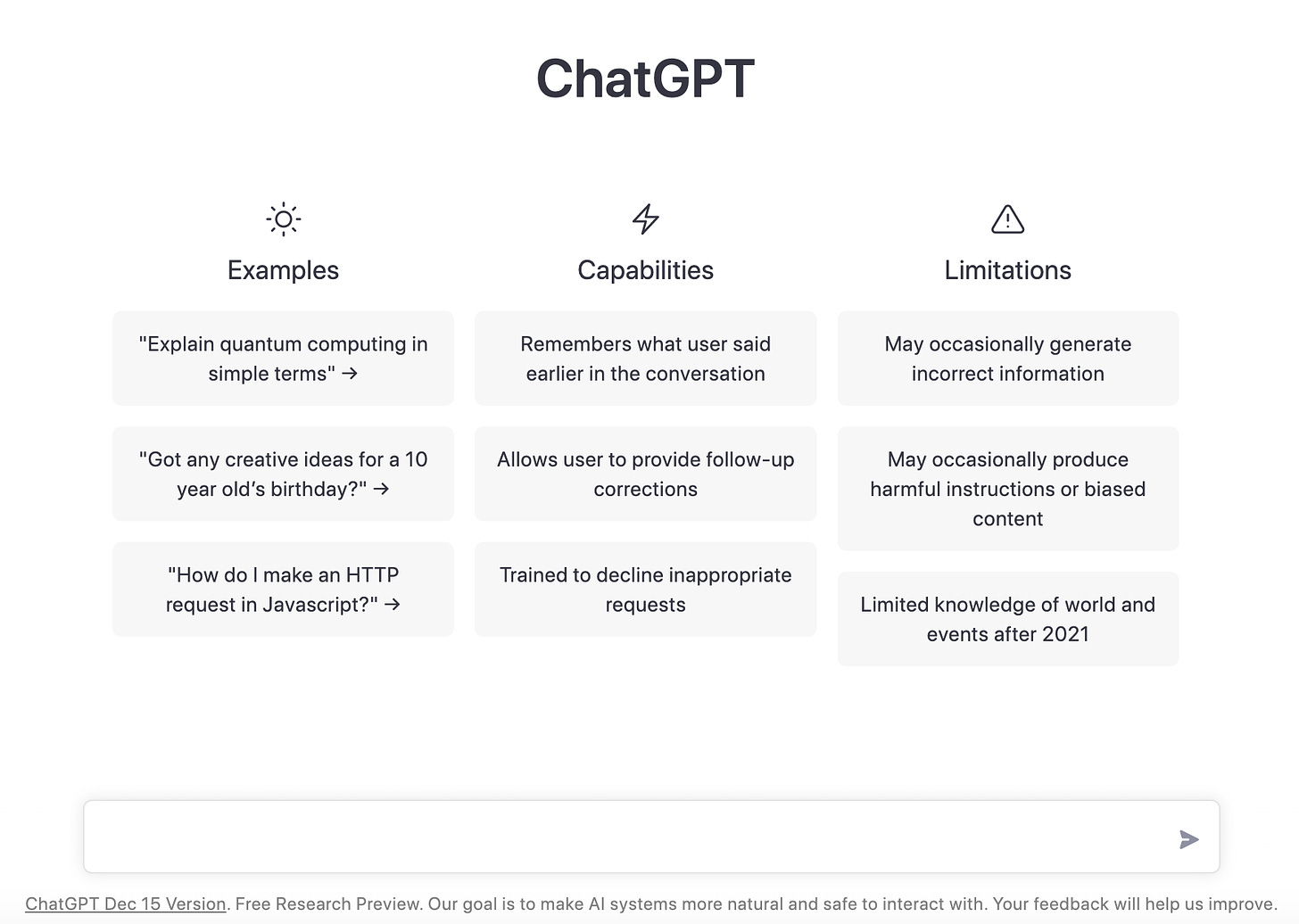
As you can see, the tool offers a simple UI. All you need to do is type your question in the text box and like magic, in seconds you get an answer
What Does It Do?
Unlike search engines that give you an endless list of relevant results and it’s up to you to figure out the answer, ChatGPT scans billion of data points in the internet (until 2021), identifies regularities, and crafts a final answer, in seconds.
The answer could be a story, an essay, opening monologue, dinner menu, marketing copy, writing or debugging programming code and more.
You can try it here.
You might get “ChatGPT is at capacity right now. Get notified when we’re back.” So you likely have to try later.
And like its sibling, DALL-E-2, the AI-image generator, you can ask the bot to come up with an answer in a particular style – say explaining how to remove a sandwich from a VCR in the style of the King James Bible – (source: NYT) – which makes it quite hilarious. In fact a ton of similar viral gags have flooded social.
What’s more, this bot also remembers your past interaction using it, thus factoring in to responses. Yep! Pretty much like your VA.
What’s OpenAI’s Backstory?
OpenAI is a non-profit organization that was founded in San Francisco in late 2015 by Sam Altman, Elon Musk, and others who invested US$1 billion.
Elon Musk resigned from the board in February 2018 but remained a donor. In 2019, OpenAI LP received a US$1 billion investment from Microsoft and Matthew Brown Companies (wikipedia).
Yep! If OpenAI sounds familiar to you, it’s the same company that is also behind GPT-3 and DALL-E 2 – AI image generators that also created a huge buzz and adoption.
Further Geeking Out
The ChatGPT is built on advances in machine learning and deep learning.
It is pre-trained because it was trained in advance on a large set of text sequences — that’s why it only has access to web content up to 2021!
It is trained to learn regularities in the text sequences using machine learning approaches, including Reinforcement Learning from Human Feedback which uses human preferences to fine tune the models. After learning, it can then chat and generate text, such as essays, poems, computer code, and marketing tips…
The ChatGPT is based on the transformer neural network architecture developed by Google and demonstrated on language translation (see their paper “Attention is all you need”, NeurIPS 2017) and then used in Google’s LaMDA chatbot project.
You’re right again! It’s the same project that caught headlines last July, when Google fired engineer and tester Blake Lemoine after he called it sentient.
Likening the experience to chatting with a real person that can perceive things and have feelings.
Yes, But…
While ChatGPT has a tremendous capability to create textual content with impressive results, it basically synthesizes existing data – in this case up to 2021.
True, there are still accuracy bugs, and the closed loop limitation that excludes true innovation, but still this could hint at a revolutionary tech coming our way.
Some say the size of the iPhone.
For now you still need a human hand on the wheel.
One of the heated debates these days is in the education sector where students are not expected to innovate but simply express they understood the material by writing essays and taking exams.
Dr. Scott Dell, an Assistant Professor of Accounting at Francis Marion University, and a subscriber to this newsletter shared with me this telling story testing the tool.
He has recently tested ChatGPT with an accounting test he normally gives his students.
Interestingly, he found that the ChatBot did quite well in the first six questions with 83.3%, but dropped to 46% after the next seven questions. What he found worrisome, is that even the wrong answers sound quite convincing and could easily mislead students.
From this perspective, I think ChatGPT could become another type of plagiarism of our era.
I can definitely see the emergence of “AI Plagiarism Checkers” as trusted tools for educators when evaluating take home exams.
Dr. Dell reports that there are already two AI checkers but the field is still young.
What Are the Top Use Cases For Using ChatGPT in Marketing?
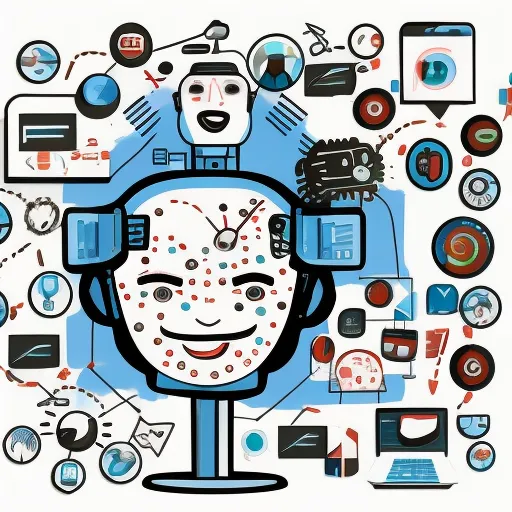
Beyond advanced predictive modeling, how marketers will use AI in their daily routines? (created with Stable Diffusion)
So far, I have been using ChatGPT as a support tool for brainstorming article headlines, podcast titles, lead gen messaging and for particular topics.
At this point, I see the tool as nothing more than a brainstorming and research tool to help me draft key ideas out there as a basis to forming my own take.
For fun, I figured if this tool is so smart. Let’s ask it the very same question: What Are the Top Use Cases For Using ChatGPT in Marketing?
Here is what it came up with:
GPT (Generative Pre-trained Transformer) is a type of artificial intelligence language model developed by OpenAI. It is a machine learning model that has been trained to generate human-like text. Here are a few potential use cases for using GPT in marketing:
- Content creation: GPT can be used to generate marketing copy, such as blog posts, social media posts, and email newsletters.
- Chatbots: GPT can be used to build chatbots that can hold natural conversations with customers, answering their questions and providing information about products or services.
- Personalization: GPT can be used to personalize marketing messages and content for individual customers, based on their past interactions and behavior.
- Market research: GPT can be used to analyze customer feedback and generate insights about market trends and the needs of target audiences.
- Customer service: GPT can be used to build chatbots or virtual assistants that can handle customer inquiries and resolve issues in real-time.
Keep in mind that while GPT can be a powerful tool for marketing, it is important to use it ethically and transparently, and to carefully consider the potential risks and implications of using AI in marketing.
Quite impressive!
You can see the bottom disclaimer that indicates that the tool was programmed with built-in safeguards. For this reason, the tool excludes harmful or abusive requests.
What Marketers Think?
For real people’s perspectives, check out these 13 ways marketing, advertising and PR agencies worldwide are planning to use AI in 2023 and beyond.
My favorite is #13: Predicting Media Trends And Transcribing Speech To Text.
Forget social listening tools, it’s like having a tape recorder that constantly records content from gazillion sources and comes up with key media trends summary, not in 3 weeks but in minutes!
This reminds me of the spectacular evolution of live information capture over the years.
From my college days when we all used pen and paper to take notes, tape recorders, today’s recorded Zoom and PPT slides I share with my clients/students, preempting the need to write anything – to future AI tools that both will capture and summarize key points.
At this rate, the next frontier will likely be skipping capture and summary altogether. All you’ll need to do is take an “Electrical Engineering Pill” that will directly install the field knowledge right into your brain.
Naturally when this will happen, you’re right assuming why bother? Let the machines take over.
Get 15% off a group subscription
The Larger Picture
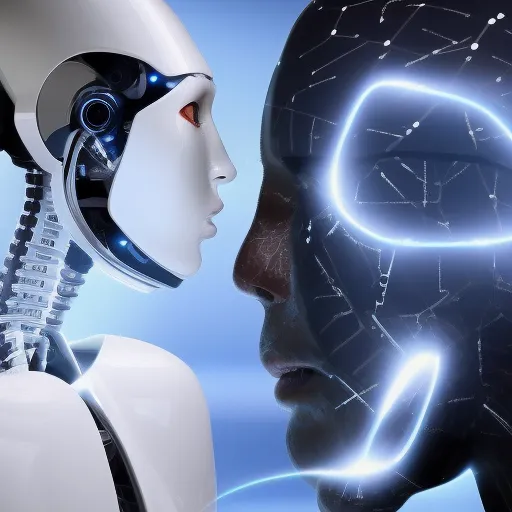
What will be the future relationship between AI and people? For now it’s still an open question (created with Stable Diffusion)
It’s still early days for this AI technology. There are still gaps but it gives you an idea of where AI is headed.
The stakes are high for Google, since if more people will transition to chatbot experiences it could threaten their search ad business which today amounts to the lion share (57.1%) of their revenue.
On the other hand, Microsoft has already announced by end of March it will integrate ChatGPT into Bing and Office products. In the process it will give Microsoft a competitive edge it hasn’t possessed for more than 20 years against Big Tech competitors like Google, Amazon and Apple.
I highly recommend you test it for yourself and see how you could use it as a brainstorm or research assistant to augment your visual storytelling strategy.
Expect to see more generative AI governance to reign in this “AI Bronco” that by now covers all media formats: copy only (ChatGPT or simpler like frase for titles), photos (DALL·E 2 or Stable Diffusion among many others), and copy + visual (Predis or Synthesia).
Over time, we’ll also experience better accuracy to our queries. The next iteration, GPT-4 is rumored to be released sometime this year.
It makes you wonder. If AI can take over both copy and visuals how the future of advertising, art could look like? Will it homogenize the communication landscape with synthesized past content?
Or will AI tech overcome the innovation barrier and come up with the next Picasso?
The larger question in my mind, is what will eventually be the relationship between AI and people?
In the 2017’s book Life 3.0 Max Tegmark covers a few possible outcomes.
Will AI empower life like never before? Will machines eventually outsmart us at tasks and take our jobs? Will AI systems get hacked or take over completely?
Indeed, lots of questions.
What You Can Do
Have you tried ChatGPT? What was your experience like? Feel free to share.
If you haven’t, you can take part in shaping the AI future by testing the tool for yourself and coming up with your own observations and use cases.
Either way, regardless of the technology of the day (medium), I strongly believe a good story – with inclusive characters that look like customers, meaningful conflicts, high stakes, rollercoaster emotional arc and inspiring moral (message) – always wins.
Hopefully, us humans will still be in the driving seat 😉
This was a sneak preview from my weekly Visual Storytelling Newsletter. Subscribe now and also receive a FREE copy of my Top 20 Visual Storytelling Tips Picture Book.
- Posted In:
- AI
- Design
- Story Visualizing
- Visual Storytelling
Shlomi Ron
Shlomi Ron is the founder and CEO of the Visual Storytelling Institute, a Miami-based think tank with a mission to bring the gospel of visual storytelling from the world of art to more human-centric and purpose-driven marketing. A digital marketing veteran with over 20 years of experience working both on the agency and brand sides for Fortune 100/500 brands such as Nokia, IBM, and American Express. He started VSI to combine his marketing expertise with his passion for visual stories stemming from his interests in classic Italian cinema and managing the estate of video art pioneer, Buky Schwartz. At VSI, he helps brands rise above the communication noise through visual storytelling consulting, training, and thought leadership. Select clients include Estée Lauder, Microsoft, and Cable & Wireless – to name a few. He currently teaches Brand Storytelling at the University of Miami’s Business School. Thought leader and speaker at key marketing conferences. He is also the host of the Visual Storytelling Today podcast, which ranks in the top 10 best business storytelling podcasts on the Web. His book: Total Acuity: Tales with Marketing Morals to Help You Create Richer Visual Brand Stories. Outside work, he is a nascent bread baker, The Moth fan, and longtime fedora wearer likely to jive with his classic Italian cinema interest.
All stories by: Shlomi RonYou might also like
This site uses Akismet to reduce spam. Learn how your comment data is processed.





Leave a Reply